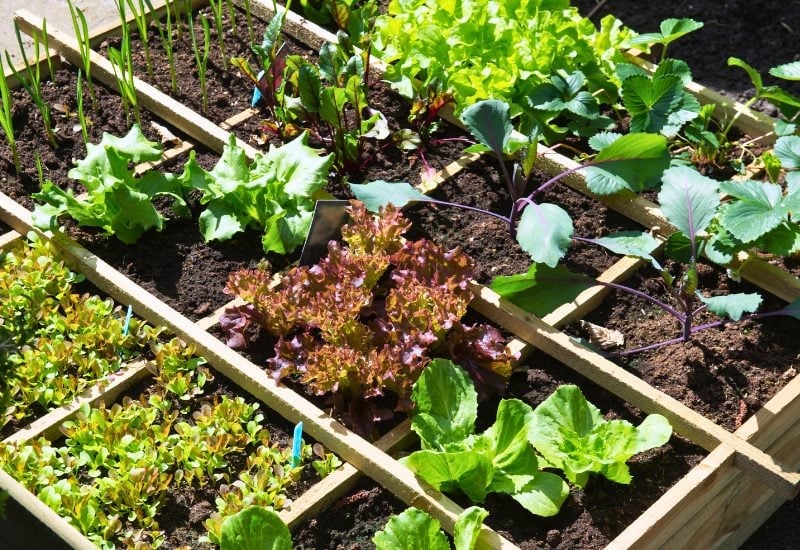
Spring vegetables come with the promise of putting food on your table, while saving on grocery bills. Yet some take longer than others to go from seed to supper. Knowing which vegetables to plant first gets you started on a bountiful season to come.
If you want to cut down on those high grocery bills as quickly as possible, you want to plant the following 8 vegetables first!
Radishes
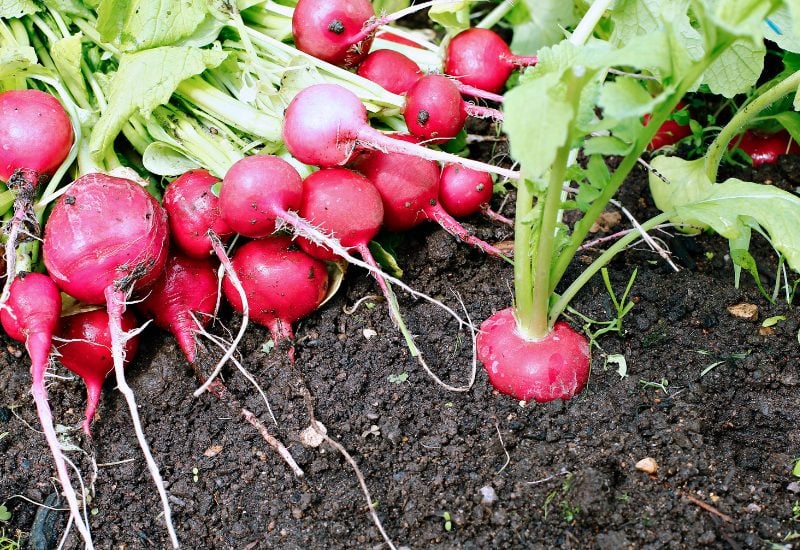
Radishes germinate quickly, they’re incredibly cold-hardy, and they have the kind of bulk that fills your belly. If you find common radishes boring, you might want to try growing French radishes, which are longer, more flavorful, and play well with simple spreads like butter.
How to Plant Radishes
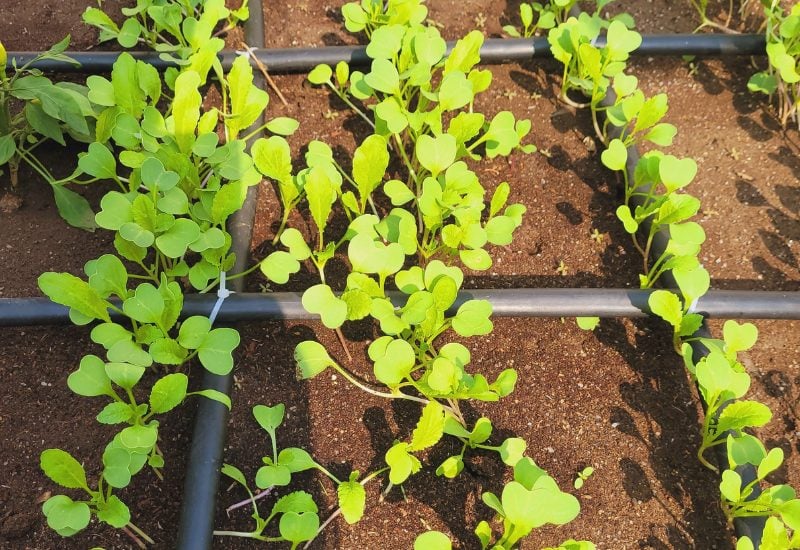
Radishes will germinate the grow fastest in well-tilled soil that is kept modestly warm for a few days after planting. A plastic row cover or a cold frame to keep the soil around 55 to 60 degrees boosts germination rates.
From there, they just need consistent moisture and reasonable weeding. Radish seedlings can tolerate temperatures down to 20 degrees and can even survive being covered for a few days under a couple of inches of snow.
Thin the radish seedlings to 2 inches or 1.5 inches between seedlings for French radishes.
Mesclun Greens
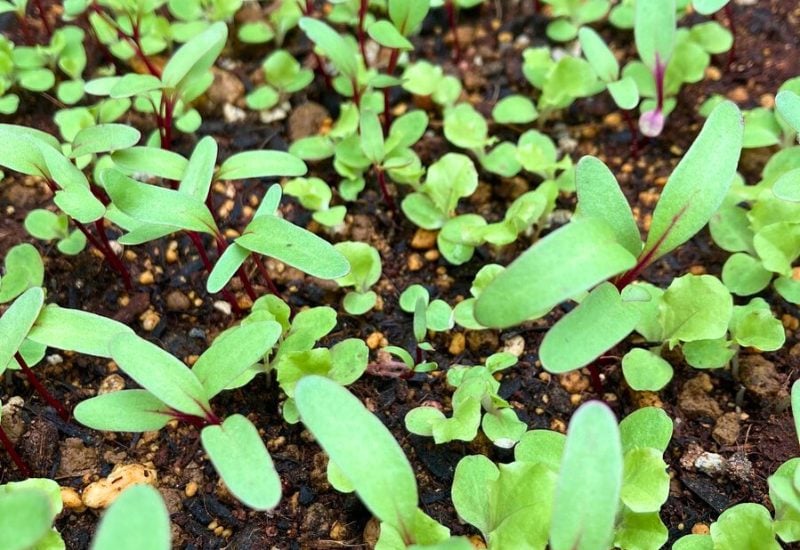
Mesclun greens can go from seed to a cut-and-come-again salad mix in as little as two weeks, under the right conditions. The trick is to germinate the seedlings in the early days in warm soil, then cut them back leaving 1.5 to 2 inches of the plant’s stem for it to regrow. In fair conditions, mesclun greens can give you a second harvest in as little as 2 weeks.
How to Plant Mesclun Greens
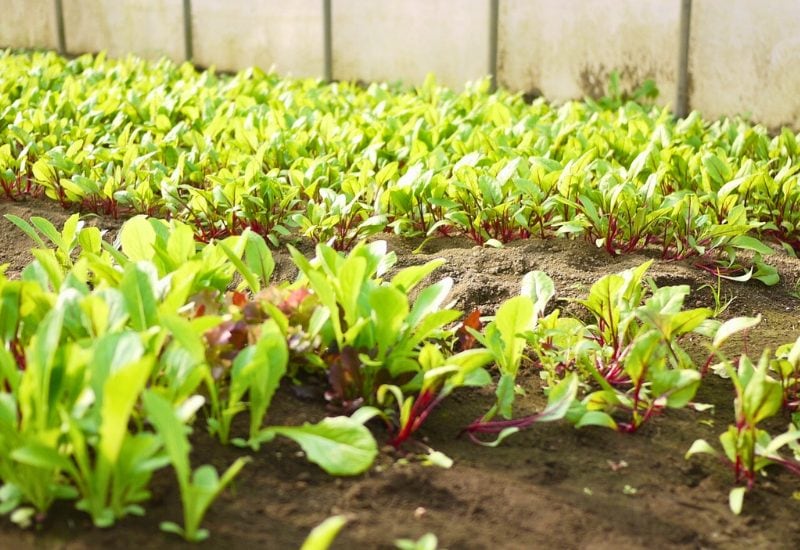
When directly sowing mesclun greens to put food on the table fast, you want to maintain a soil temperature of 45 to 70 degrees. This will boost germination rates.
Let the seedlings grow until they are roughly 4 inches tall. Then trim them back to 2 inches. Consider thinning if one area in the planting bed appears to need it. You might be able to get a third harvest in modest spring.
Spinach
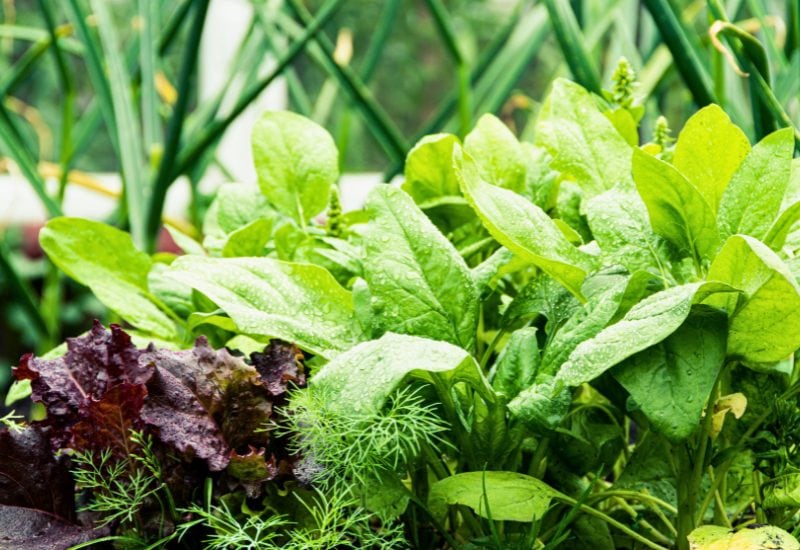
Spinach is another leafy green that will put food on your table fast in the spring. It bolts easily in warm weather, but is cold-hardy down to 25 degrees, making it one of the best vegetables to plant first. You can also cut it back and it will come again in a week or two in fair weather.
How to Plant Spinach
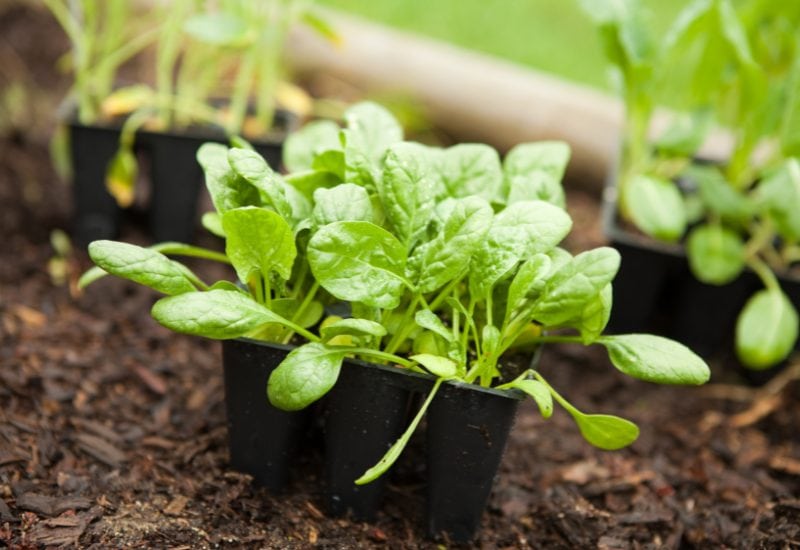
Planting spinach for a fast-spring harvest starts with seeding it in a warm planting bed. Just be sure to remove any sort of plastic row cover or cold frame once the emerging leaves are the side of your pinky nail.
You can cut spinach when it’s 3 to 5 inches high. Leaving a third of the plant behind will allow it to regrow easily. Just be sure to keep the soil consistently moist.
Bok Choi
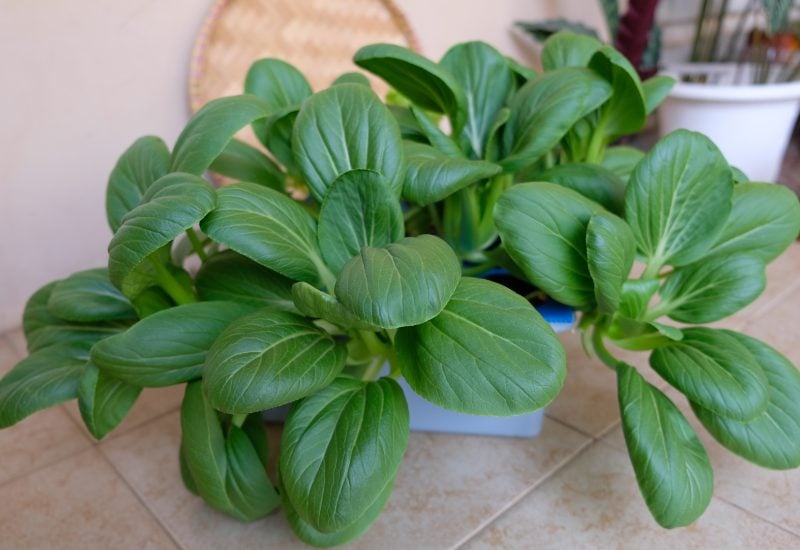
Also known as Pak Choi, Bok Choi is a frost-resilient plant that can fill your belly fast in the springtime. Like radishes, it has more belly-filling bulk than leafy greens, and can be served fresh in salads or cooked in several different ways.
Bok chois is also easy to grow in small containers. This strategy can come in handy for a patio garden or if your spring weather has a roller coaster hard freeze in the forecast.
How to Plant Bok Choi
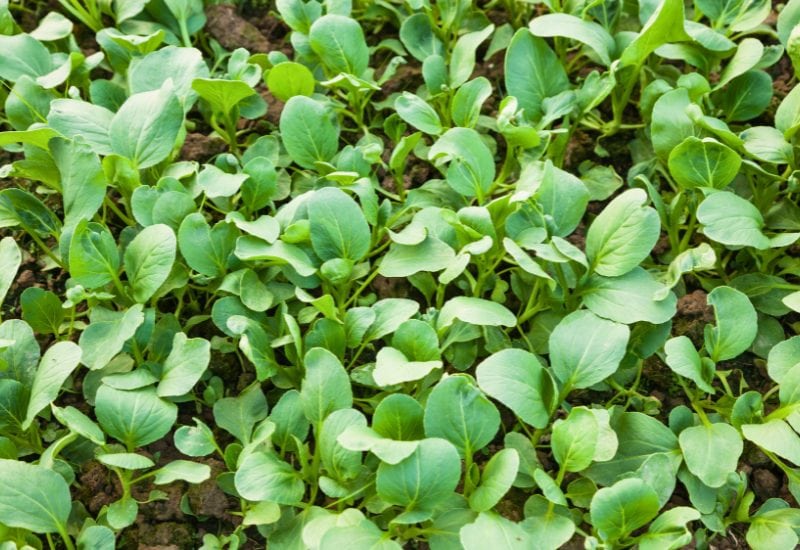
I prefer to plant bok choi in a small container with around 1 gallon of potting soil. Even an old ice cream bucket will do. I’ll start it indoors where I can keep the soil consistently warm, which promotes good germination.
Bok Choi grows best and will give you the fastest harvest if you can keep the soil temperature between 45 to 75 degrees. It needs at least 6 to 8 hours of direct sun, and prefers east or southeastern morning light.
Sugar Snap Peas
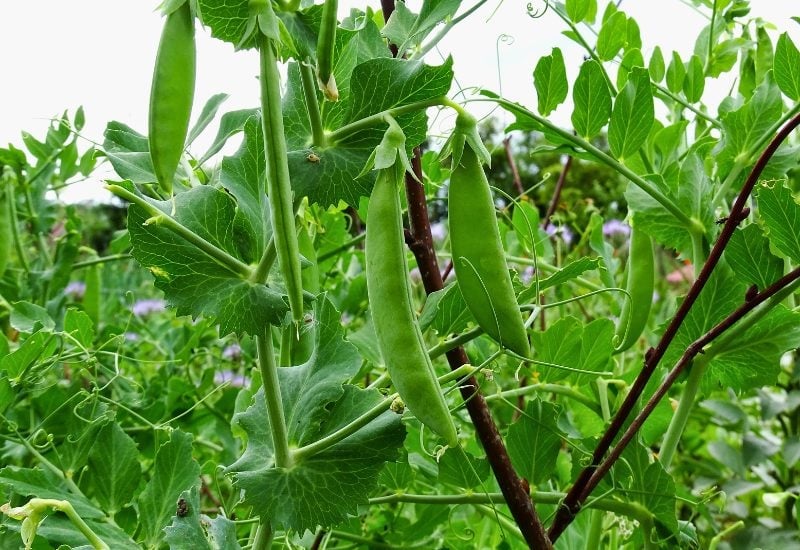
Sugar snap or snow peas are cold hardy down to 20 degrees, which lets you plant them as one of the first of all spring vegetables. They tend to die back by the heat of June. So, you don’t want to delay.
However, sugar snap peas need to be started in warm soil around 60 degrees to keep them from rotting. They will sit inert in cold soil, which invites problems with rodents eating the seeds and soil-borne fungal diseases.
Sugar snap peas also need some sort of trellis to climb within the first day or two of emerging. Even a simple panel of expanded metal or some carefully placed strings for the runners to grab ahold of will suffice.
How to Plant Sugar Snap Peas
You can directly sow sugar snap peas in the soil of the planting bed during a stretch of warm weather. Otherwise, the safer bet is to start them in a moist paper towel inside a heated germination tray. You could also start them in small peat pots before transplanting within 24 hours of germination.
The nice thing about sugar snap peas is that you can plant them intensely close to each other. It’s a great way to get a lot of food value early in the spring in a minimal amount of space.
Beets

One of the great things about planting beets as one of your first spring vegetables is that with most early varieties you can eat the greens and the root. You can also thin baby beets to put on the table or pickle them for long-term storage. This will make room for the remaining beets to grow large for an additional harvest in late spring or early summer.
Selecting an early variety like Early Wonder or Golden will give you beet greens for table salads in a few weeks, and baby beets a few weeks after that.
How to Plant Beets
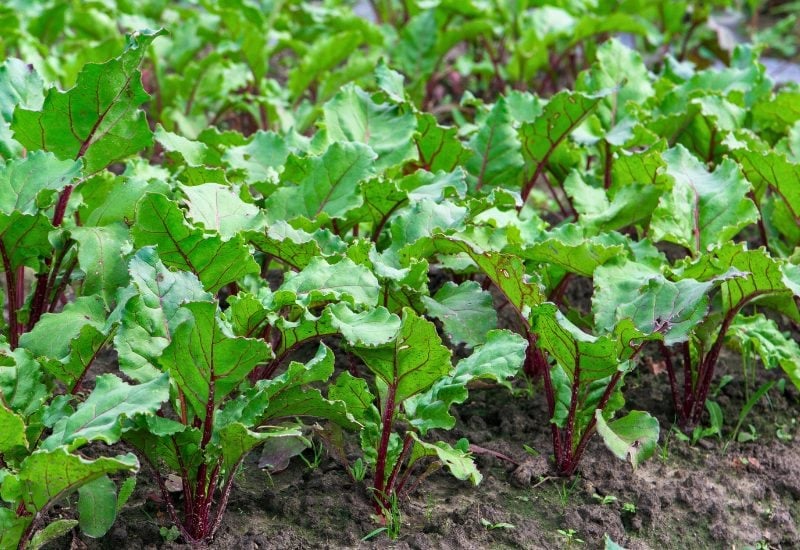
You need to directly sow beets into a well-tilled planting bed at 1.5 to 2 inches deep. Keep the planting bed consistently moist without it getting waterlogged. A fabric row cover helps.
Thin the beets to 2 inches when the greens are the size of a pinky nail. You can harvest the greens when they’re 3 inches tall. Baby beets are at their most tender and flavorful when they’re the size of a golf ball.
Loose Leaf Lettuce
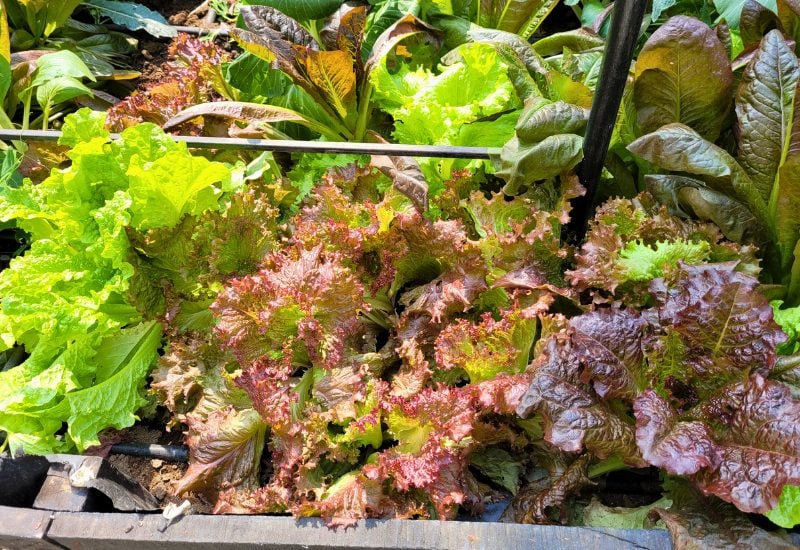
Loose-leaf lettuces and loose-headed lettuce like buttercup are another great greens that will put food on the table fast in spring. They’re cold-tolerant, but you’ll need to protect them from being flattened by a freak spring snowstorm.
One of the things I really enjoy about loose-leaf lettuce is that with careful seed spacing you can thin small plants. Then use them as microgreens for an improvised mini-early harvest.
How to Plant Loose Leaf Lettuce
After loosely tilling the planting bed, you can plant loose-leaf lettuce seeds around half to a quarter inch deep. Provide them with consistent moisture throughout germination and as they grow.
Thin and harvest them as they grow for small harvests. Most early varieties like Oakleaf and Lollo Rosso, will cut and come again in good weather.
Kale

Kale is arguably the most popular vegetable to plant in early spring, thanks to its impressive cold tolerance and the valuable nutrients it provides. If a little snow does fall after germinating the biggest worry is the weight of the snow compacting the leafy kale plant. Otherwise, it’s cold-hardy down to 20 degrees.
How to Plant Kale
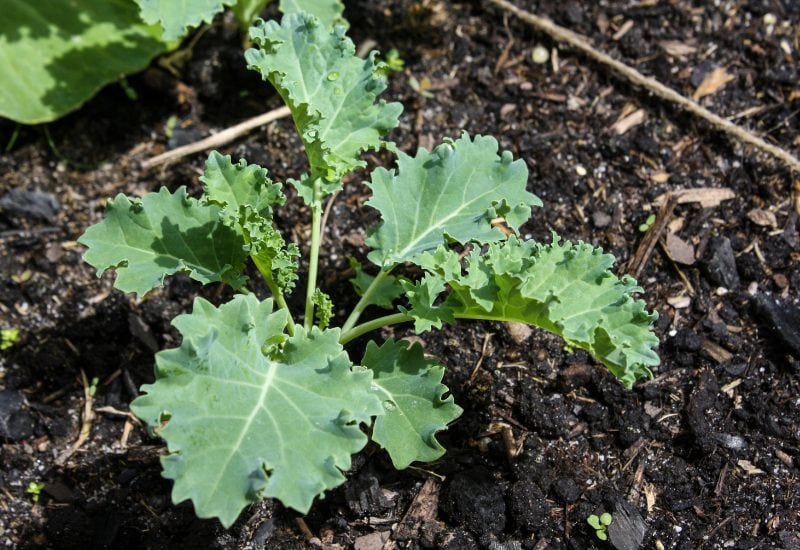
Plant kale seeds one-quarter to half-and-inch deep in loosely tilled soil, roughly 4 to 6 weeks before the average last frost date for your growing zone. You can then thin them to 12 to 18 inches apart with the same distance between rows. Thinned kale plants can be used as microgreens or as a garnish for many other dishes. Giving you a first taste in spring before the main kale harvest comes in.

Written By
Amber Noyes
Amber Noyes was born and raised in a suburban California town, San Mateo. She holds a master’s degree in horticulture from the University of California as well as a BS in Biology from the University of San Francisco. With experience working on an organic farm, water conservation research, farmers’ markets, and plant nursery, she understands what makes plants thrive and how we can better understand the connection between microclimate and plant health. When she’s not on the land, Amber loves informing people of new ideas/things related to gardening, especially organic gardening, houseplants, and growing plants in a small space.
